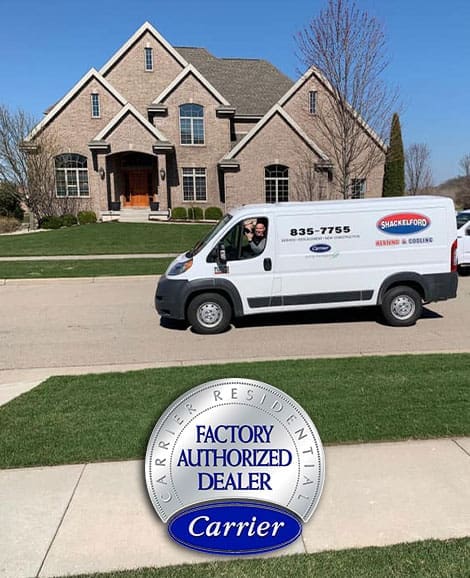Allergies can be a significant nuisance, affecting your quality of life, productivity, and overall well-being. Common allergens such as pollen, dust mites, pet dander, and mold can infiltrate your home and exacerbate symptoms like sneezing, itching, congestion, and respiratory issues. Fortunately, there are numerous steps you can take to mitigate these allergens within your living environment. This guide, provided by Shackelford Heating and Cooling, outlines practical measures to help you create a more allergy-friendly home.
1. Maintain Clean Air with HVAC Systems
Your heating, ventilation, and air conditioning (HVAC) system plays a crucial role in managing indoor air quality. Proper maintenance of your HVAC system can significantly reduce allergens in your home.
Regular Filter Replacement: One of the simplest yet most effective ways to improve indoor air quality is by regularly replacing your HVAC filters. High-efficiency particulate air (HEPA) filters are particularly effective in trapping small particles, including pollen, dust mites, and pet dander. Aim to replace these filters every 1-3 months, depending on usage and manufacturer recommendations.
Professional HVAC Maintenance: Regular professional maintenance ensures your HVAC system is operating efficiently. A well-maintained system not only improves air quality but also extends the lifespan of your equipment. Schedule annual inspections and tune-ups to keep your system in top condition.
Air Purifiers and Cleaners: Consider installing an air purifier or cleaner that works with your HVAC system. These devices can remove additional pollutants from the air, providing an extra layer of protection against allergens.
2. Control Humidity Levels
Maintaining optimal humidity levels in your home is essential for reducing mold growth and dust mites, both common allergens. The ideal indoor humidity level is between 30% and 50%.
Dehumidifiers: In areas with high humidity, such as basements and bathrooms, using a dehumidifier can help maintain appropriate moisture levels. This device extracts excess moisture from the air, preventing the growth of mold and reducing dust mites.
Proper Ventilation: Ensure that your home is adequately ventilated. Use exhaust fans in bathrooms and kitchens to remove moisture and odors. Additionally, consider using a whole-house ventilation system to improve air circulation and reduce humidity levels.
3. Implement a Cleaning Routine
Regular cleaning is vital for minimizing allergens in your home. Here are some tips to keep your living space allergen-free:
Vacuum Regularly: Carpets, rugs, and upholstered furniture can trap allergens like dust, pet dander, and pollen. Vacuum these surfaces at least once a week using a vacuum cleaner equipped with a HEPA filter to effectively capture small particles.
Dust Frequently: Dust all surfaces, including shelves, blinds, and electronics, with a damp cloth or microfiber duster. Avoid dry dusting, which can stir up allergens and make them airborne.
Wash Bedding and Curtains: Wash bedding, pillowcases, and curtains in hot water weekly to eliminate dust mites and other allergens. Consider using allergen-proof covers for mattresses and pillows to create a barrier against dust mites.
Declutter: Reduce clutter in your home to minimize dust accumulation. Items like books, magazines, and decorative objects can collect dust, so keep surfaces clean and uncluttered.
4. Pet Care
Pets can be a significant source of allergens, particularly if you have allergies to pet dander. While it might be difficult to part with a beloved pet, there are ways to manage pet-related allergens:
Pet Grooming: Regularly groom your pets to reduce the amount of dander they shed. Brush them outdoors to prevent allergens from spreading inside your home. Bathing pets regularly can also help reduce dander levels.
Designate Pet-Free Zones: Create pet-free zones in your home, especially in bedrooms, to reduce allergen exposure where you sleep. Use HEPA filters in these areas to further decrease allergens.
Clean Pet Bedding: Wash pet bedding and toys frequently to minimize the accumulation of allergens. Choose easy-to-clean materials and wash them in hot water.
5. Manage Outdoor Allergens
Outdoor allergens like pollen can easily enter your home. Taking steps to manage these allergens can significantly improve your indoor air quality:
Keep Windows Closed: During high pollen seasons, keep windows and doors closed to prevent pollen from entering your home. Use air conditioning to maintain a comfortable indoor temperature instead.
Clean Entryways: Pollen and other allergens can be tracked into your home on shoes and clothing. Place doormats at entryways and encourage family members and guests to remove shoes before entering. Regularly clean these mats to prevent allergen buildup.
Laundry Practices: When pollen counts are high, avoid drying clothes outdoors, as they can collect pollen. Instead, use a dryer or an indoor drying rack.
6. Mold Prevention
Mold is a common allergen that thrives in damp environments. Taking steps to prevent mold growth can significantly reduce allergy symptoms:
Fix Leaks: Regularly inspect your home for leaks in roofs, pipes, and basements. Promptly repair any leaks to prevent moisture buildup and mold growth.
Use Mold-Resistant Products: When renovating or building, use mold-resistant materials, such as mold-resistant drywall and paint. These products can help reduce the likelihood of mold growth in humid areas.
Control Moisture: Use exhaust fans in bathrooms and kitchens to remove moisture and prevent mold growth. Additionally, ensure that your home’s foundation and exterior are properly sealed to prevent water intrusion.
7. Natural Remedies and Alternative Methods
In addition to the above measures, some natural remedies and alternative methods can help alleviate allergy symptoms:
Saline Nasal Rinse: A saline nasal rinse can help clear allergens from your nasal passages. Use a saline solution or a neti pot to rinse your nasal cavities, reducing congestion and irritation.
Essential Oils: Certain essential oils, such as eucalyptus, peppermint, and tea tree oil, have anti-inflammatory and decongestant properties. Use a diffuser to disperse these oils in your home or add a few drops to a warm bath.
Herbal Supplements: Some herbal supplements, such as butterbur and quercetin, may help reduce allergy symptoms. Consult with a healthcare professional before starting any new supplement regimen.
8. Monitor Air Quality
Keeping track of indoor and outdoor air quality can help you take proactive measures to manage allergens:
Air Quality Monitors: Use indoor air quality monitors to track levels of common allergens like dust, mold, and volatile organic compounds (VOCs). These devices can provide real-time data, allowing you to make informed decisions about improving air quality.
Allergy Forecasts: Check local allergy forecasts to stay informed about pollen counts and other outdoor allergens. On high pollen days, take extra precautions to keep your home allergen-free.
9. Educate and Engage Family Members
Educating your family members about allergy prevention can ensure that everyone participates in maintaining an allergen-free home:
Allergy Education: Teach your family about common allergens and their sources. Explain the importance of regular cleaning, proper ventilation, and pet care in reducing allergens.
Assign Tasks: Distribute household chores related to allergy prevention among family members. Assign tasks like vacuuming, dusting, and washing bedding to ensure that everyone contributes to maintaining a clean and healthy home.
10. Seek Professional Help
In some cases, managing allergies at home may require professional assistance:
Allergy Testing: If you’re unsure about what’s triggering your allergies, consider getting allergy testing done by a healthcare professional. Identifying specific allergens can help you take targeted measures to reduce exposure.
Professional Cleaning Services: For thorough cleaning, especially in hard-to-reach areas, consider hiring professional cleaning services. These services can provide deep cleaning to remove allergens that regular cleaning might miss.
Consult HVAC Professionals: HVAC professionals can assess your system and recommend upgrades or changes to improve indoor air quality. They can also install whole-house air purifiers and other devices to enhance your home’s air quality.
Allergy relief at home requires a multifaceted approach, combining regular maintenance, cleaning, and preventive measures. By implementing these strategies, you can create a healthier living environment and reduce allergy symptoms. Shackelford Heating and Cooling is committed to helping you achieve optimal indoor air quality, ensuring your home is a sanctuary from allergens. Remember, consistency is key—regularly monitor and adjust your practices to maintain an allergen-free home.





